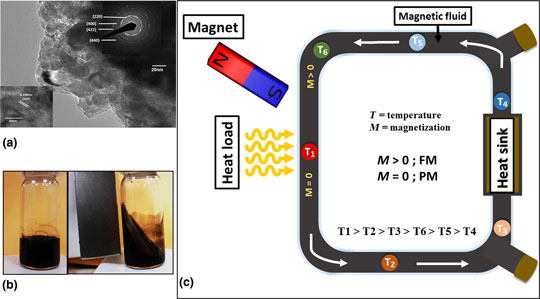Published online by Cambridge University Press: 12 July 2018

Low-cost, earth-abundant magnetocaloric materials (MCMs) are required for energy-efficient, green, and affordable magnetic cooling technology. We investigated the magnetic and magnetocaloric properties of rare-earth-free Fe75−xCrxAl25 (19≤x≤25) arc-melted alloys. The Curie temperature (Tc) of these alloys could be tuned from 220 K up to room temperature by Cr additions. The relative cooling power/US$ was found to be superior to other promising MCMs. Fe50Cr25Al25 ball-milled powders, with an average particle size of ~25 nm, were used to prepare magnetic fluid. Maximum cooling (ΔT) of 5.4°C was observed for Fe50Cr25Al25-based fluids.